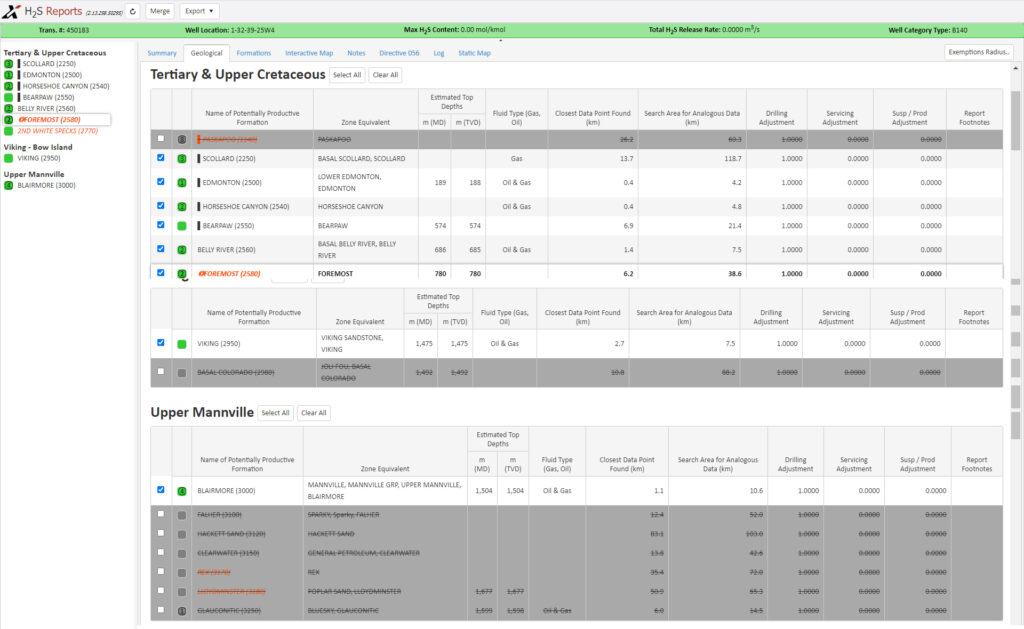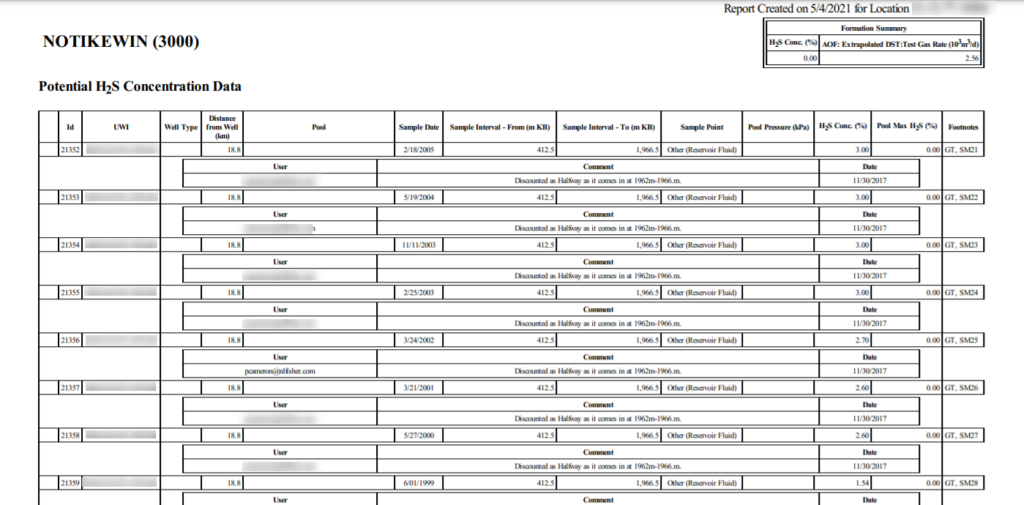Word to the Wise: H2S Release Rate Assessment Regulatory Refresher
May 4, 2021
Each week, XI Technologies scans its unique combination of enhanced industry data to provide trends and insights that have value for professionals doing business in the WCSB. If you’d like to receive our Wednesday Word to the Wise in your inbox, subscribe here.
To survive amid all the recent challenges in our sector, many companies have faced an unprecedented amount of change in their workforce. Some have lost experienced professionals to lay-offs, retirements, or redistributions, with remaining staff sometimes placed in unfamiliar roles to compensate. Because of these changes, we thought it might be useful to provide a brief refresher on existing regulations for those who may find themselves in charge of new drill programs.
For this article, we wanted to dig into Directive 056: Energy Development Applications and Schedules and what you need to know about its H2S Release Rate Assessment with regard to new drills. Regulatory compliance is a critical function of every company’s operations, and with drilling activity picking up, it’s important that well license applications are done properly.
The AER’s 158-page Directive 056 may not keep you on the edge of your seat but paying close attention to it will keep you on AER’s good side. Today, we’ll focus on a particular element of the Well Licensing portion: H2S Release Rate Assessments (7.7.15). It’s an area that AER takes quite seriously and has established a well-defined process for calculating, approving, and auditing a licensee’s assessed H2S release rate potential.
This aspect to the licensing process carries complexity and subjectivity that, without some experience and know-how, can make it a tricky minefield to navigate.
“Geology” before “Engineering & Data”
The fundamental concept of an H2S Release Rate Assessment surrounds the idea that while drilling, a well is exposed to multiple formations. A thorough, comprehensive geological prognosis is a key ingredient to a proper assessment and should be prepared and ready prior to starting this process.

The conservative answer isn’t always the best answer
When in doubt, one would think that erring on the side of caution is the safest route. This isn’t always the best policy, as some circumstances demand greater scrutiny and accuracy, especially when landowners are involved. In dealing with consultations, an overstated risk of H2S potential causes undue concern, creates unnecessary burden and mitigation costs, and sets precedent for future well applications.
It’s important to remember that the AER is performing an assessment of their own. When your numbers are vastly different than theirs, you could set off red flags that draw unwanted attention to your license application.

Explain and document your changes
The folks at AER are reasonable and understanding. As mentioned above, there’s a lot of interpretation involved when considering the potential for H2S in a given area/formation. You may have perfectly valid reasons for applying the changes and numbers you’ve used… if you’ve provided ample documentation to support it, there’s a good chance AER will accept your reasoning. When it comes to your H2S Release Rate Assessment, it’s important to show your work.

When in doubt, get an expert
XI has years of experience in this space, providing industry-standard H2SReports that gather the necessary data and help you carry out the required steps of a regulatory-compliant H2S release rate assessment. We also offer a turn-key solution to contract out your H2S assessment. To learn more about how XI can help you adhere to AER expectations, visit our website or contact us today.